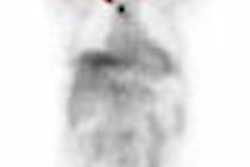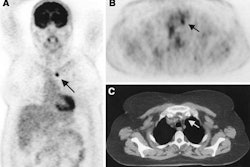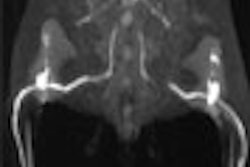The standard of care for the treatment of esophageal cancer advanced significantly at the close of the 20th century, including the increased use of esophageal ultrasound and a combination of chemoradiation and surgery.
"These changes reflect a continual progression of technology into routine clinical practice, as well as a wider acceptance of the results of large randomized trials supporting the role of combined-modality therapy in the management of this disease process," wrote lead author Dr. Mohan Suntharalingam from the University of Maryland School of Medicine in Baltimore in the International Journal of Radiation Oncology, Biology, and Physics (July 2003, Vol. 56:4, pp. 981-987).
The paper compared the latest trends in treatment and care to earlier data from the nationwide Patterns of Care Study (PCS). The latter was started in 1971 in an effort to improve the quality and accessibility of radiation oncology in the U.S. The present retrospective study was designed to evaluate patients who received radiotherapy for esophageal cancer from 1996 to 1999 and compare these numbers to PCS data obtained between 1992 and 1994.
Suntharalingam’s co-authors are from the American College of Radiology and the University of Pennsylvania, both in Philadelphia; the Community Medical Center in Toms River, NJ; Boston University School of Medicine and Massachusetts General Hospital in Boston; the Cancer Center at St. Agnes in Fresno, CA; and Memorial Sloan-Kettering Cancer Center in New York City.
For this study, site visits took place at 20 large academic centers, 19 large nonacademic centers, and 20 small academic facilities. Data for a total of 414 patients were deemed eligible. The majority of the patients (77%) were male and Caucasian (75%). Half were identified as having adenocarcinoma. Only 16% were stage I, according to the American Joint Committee on Cancer (AJCC) guidelines.
In 96% of the cases, endoscopy was used for pre-treatment evaluation. CT scans of the chest were obtained in 87% of cases; abdominal CT in 75%.
"The use of esophageal ultrasound (EUS) increases significantly during the period studied as compared to the initial PCS survey (18% versus 2%)," the authors wrote. "Patients treated at a large center were more likely to undergo EUS than those treated at a small center (23% versus 12%)."
More than half of the patients (56%) received concurrent chemoradiation as their definitive treatment plan. In 27% of the cases, surgical resection was planned after neoadjuvant chemoradiation. Once again, the authors found an increase in preoperative chemoradiation followed by surgery in their data (27%) when compared with the previous PCS survey (10%), most often in patients with adenocarcimona.
All patients received external-beam radiation therapy with a medial total dose of 50.4 Gy delivered. The majority of patients (93%) completed the full course of radiotherapy (50 days or more). Ninety-seven percent of the patients received concurrent chemotherapy, including 5-fluorouracil (82%), cisplatin (67%), and paclitaxel (22%).
The authors pointed out that there has been a significant increase in the use of paclitaxel (22% in this study versus 0.2% in the PCS study), despite the lack of phase III data. They attributed paclitaxel’s popularity to the "desire to improve local control and overall survival associated" with more-established chemotherapy drugs.
Finally, they found that patients treated at large facilities were more likely to undergo 3-D CT treatment planning than patients at smaller institutions.
"(These) results will be shared with investigators from the American College of Surgeons, along with researchers from various other countries...in an attempt to identify possible opportunities to improve the outcomes for this patient population," they concluded.
By Shalmali PalAuntMinnie.com staff writer
July 21, 2003
Related Reading
Esophageal cancer patients benefit from clinical staging with FDG-PET, June 26, 2003
Chemoradiotherapy of long-term benefit in inoperable esophageal cancer, February 7, 2002
Copyright © 2003 AuntMinnie.com



















